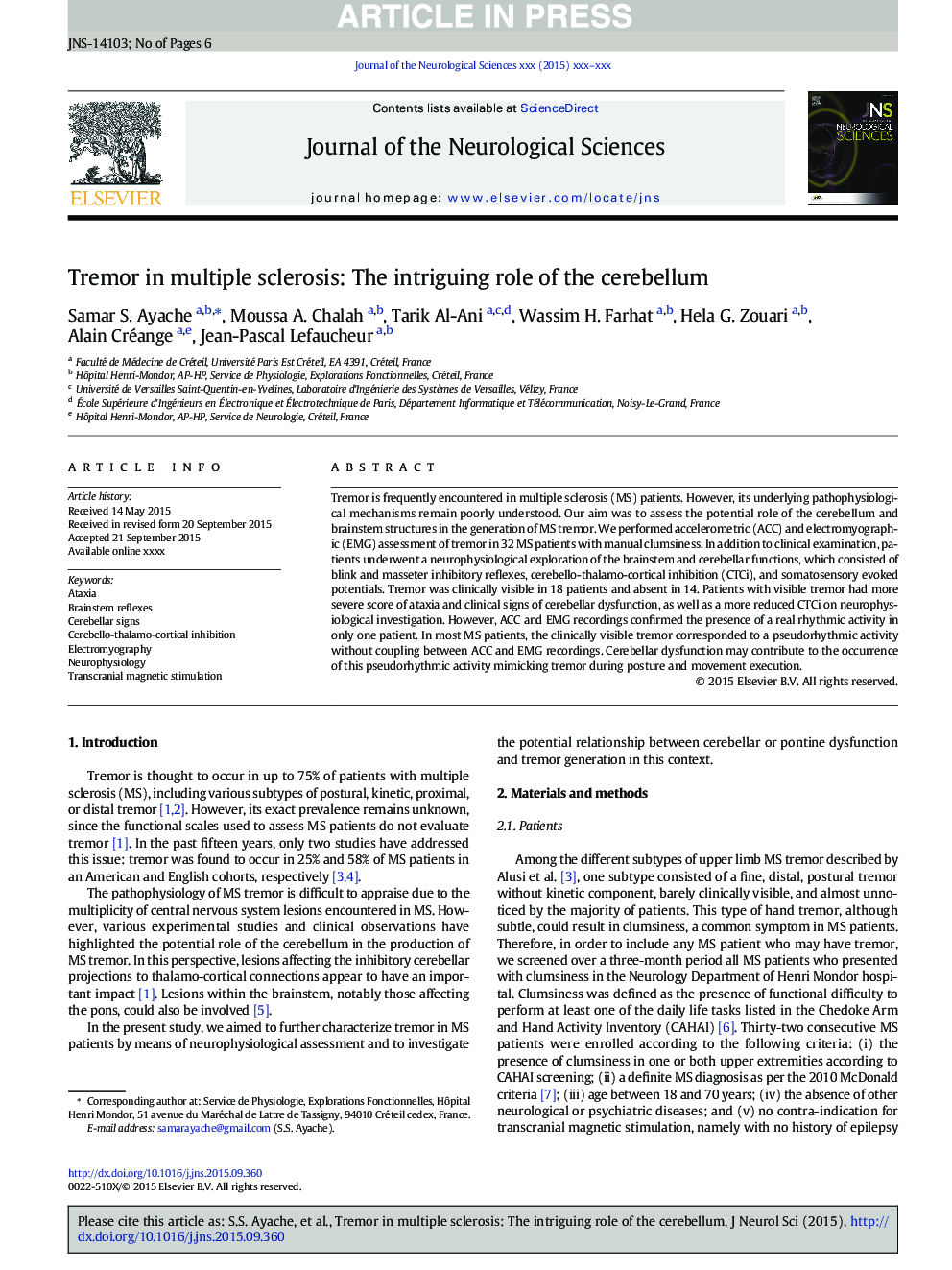| Article ID | Journal | Published Year | Pages | File Type |
|---|---|---|---|---|
| 8275808 | Journal of the Neurological Sciences | 2015 | 6 Pages |
Abstract
Tremor is frequently encountered in multiple sclerosis (MS) patients. However, its underlying pathophysiological mechanisms remain poorly understood. Our aim was to assess the potential role of the cerebellum and brainstem structures in the generation of MS tremor. We performed accelerometric (ACC) and electromyographic (EMG) assessment of tremor in 32 MS patients with manual clumsiness. In addition to clinical examination, patients underwent a neurophysiological exploration of the brainstem and cerebellar functions, which consisted of blink and masseter inhibitory reflexes, cerebello-thalamo-cortical inhibition (CTCi), and somatosensory evoked potentials. Tremor was clinically visible in 18 patients and absent in 14. Patients with visible tremor had more severe score of ataxia and clinical signs of cerebellar dysfunction, as well as a more reduced CTCi on neurophysiological investigation. However, ACC and EMG recordings confirmed the presence of a real rhythmic activity in only one patient. In most MS patients, the clinically visible tremor corresponded to a pseudorhythmic activity without coupling between ACC and EMG recordings. Cerebellar dysfunction may contribute to the occurrence of this pseudorhythmic activity mimicking tremor during posture and movement execution.
Keywords
Related Topics
Life Sciences
Biochemistry, Genetics and Molecular Biology
Ageing
Authors
Samar S. Ayache, Moussa A. Chalah, Tarik Al-Ani, Wassim H. Farhat, Hela G. Zouari, Alain Créange, Jean-Pascal Lefaucheur,
